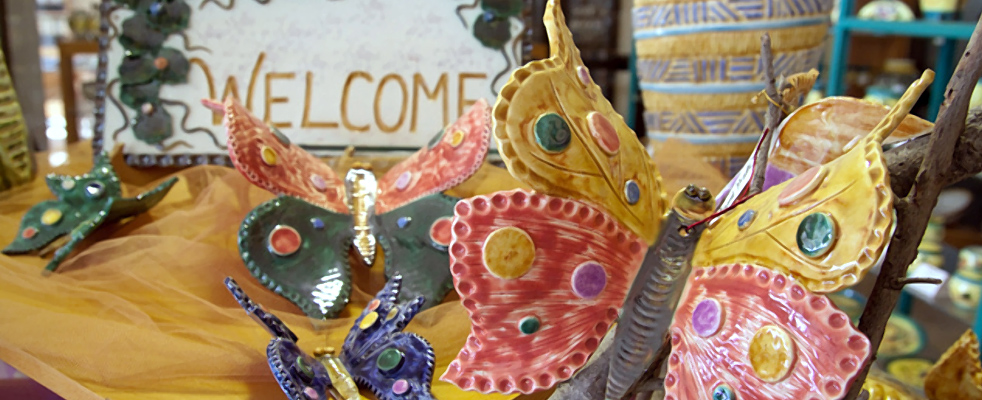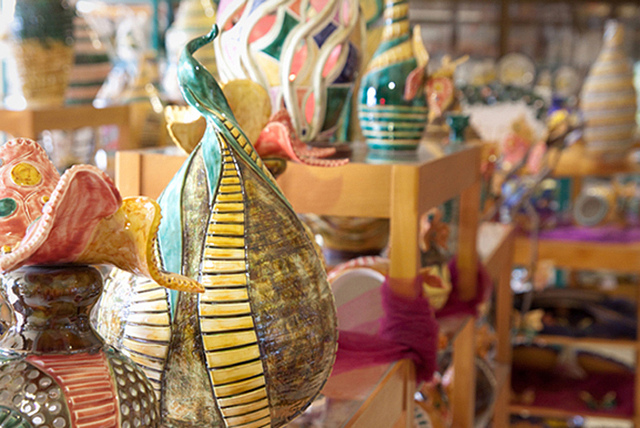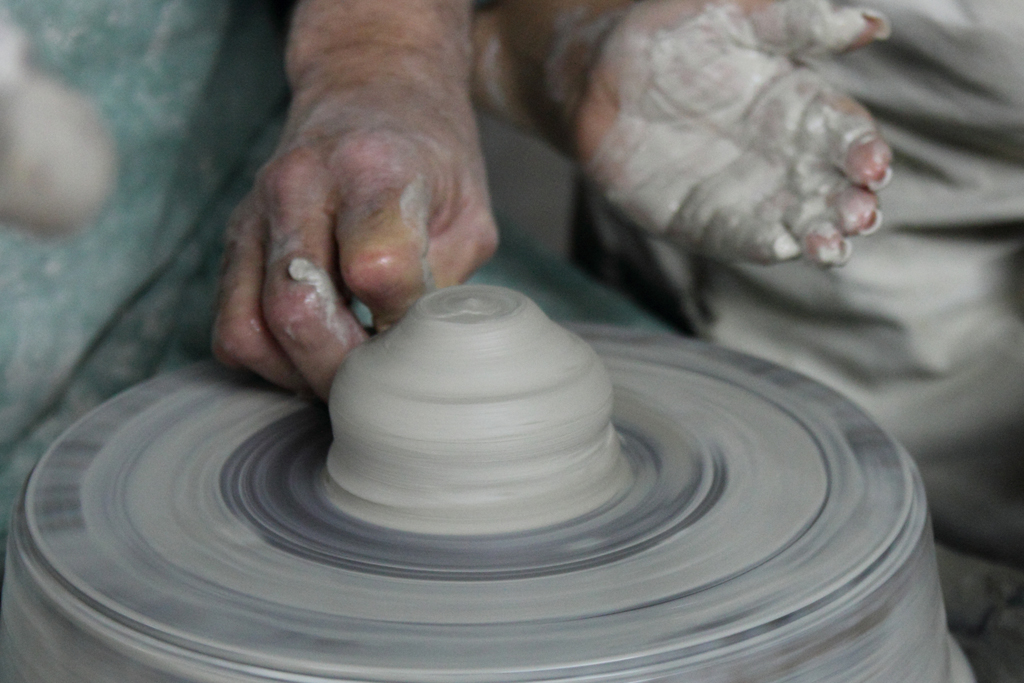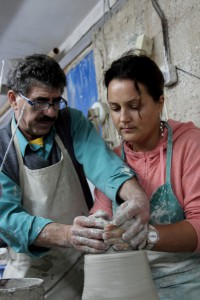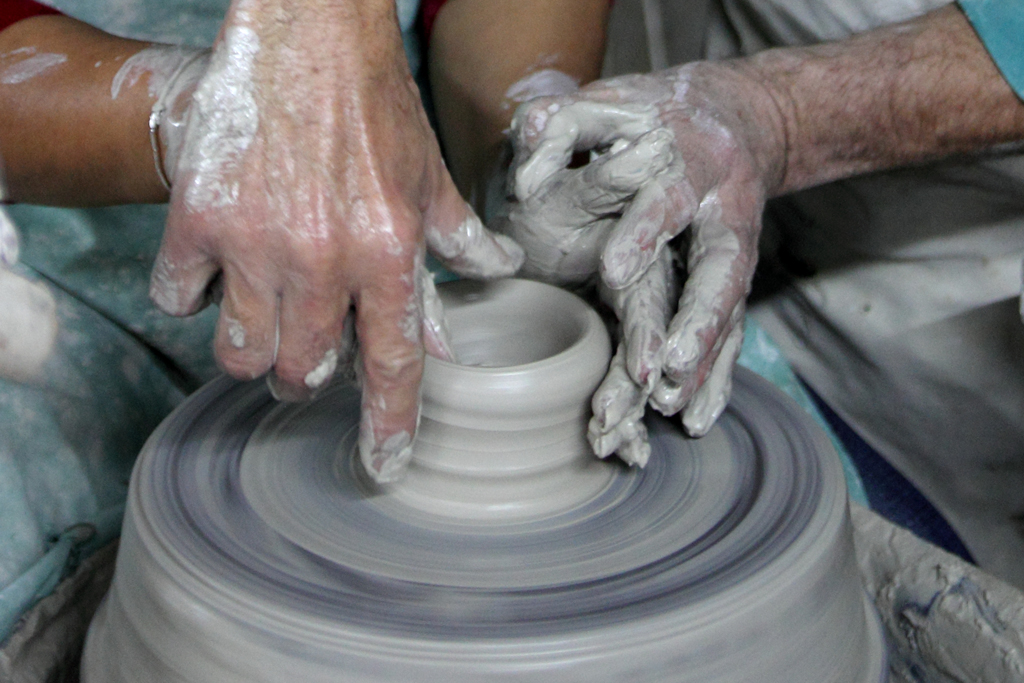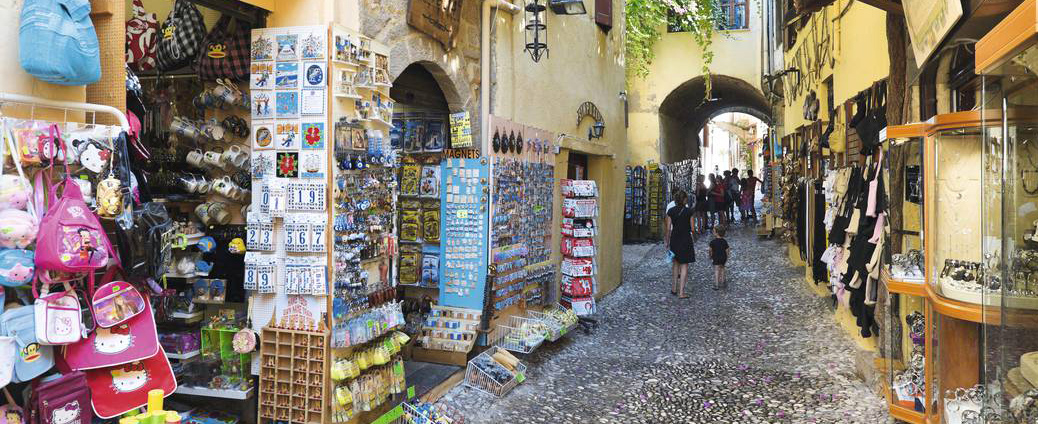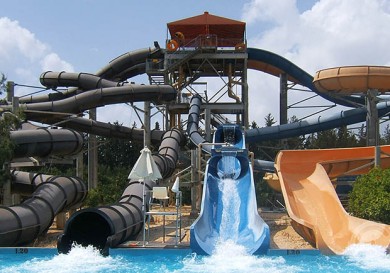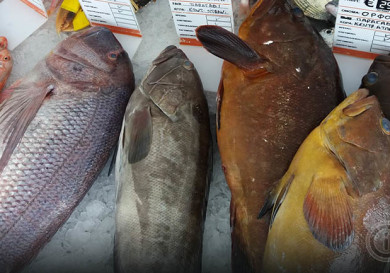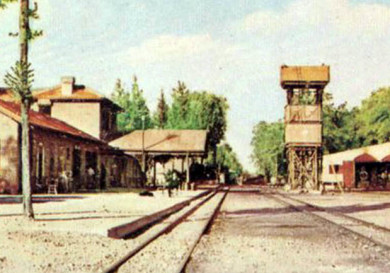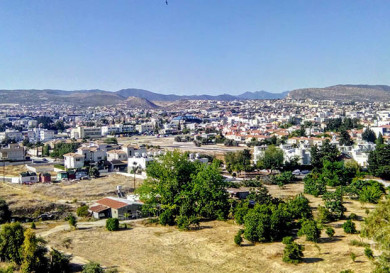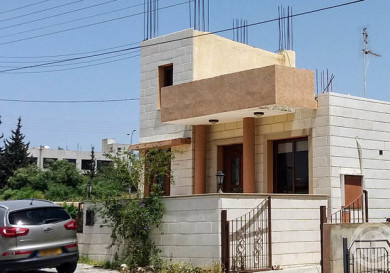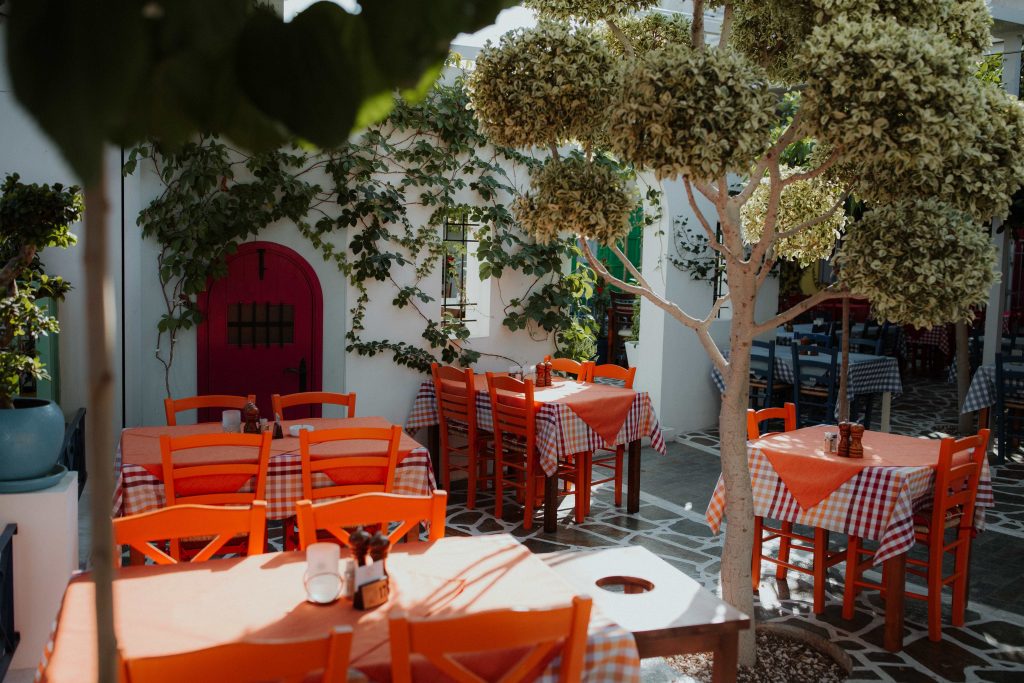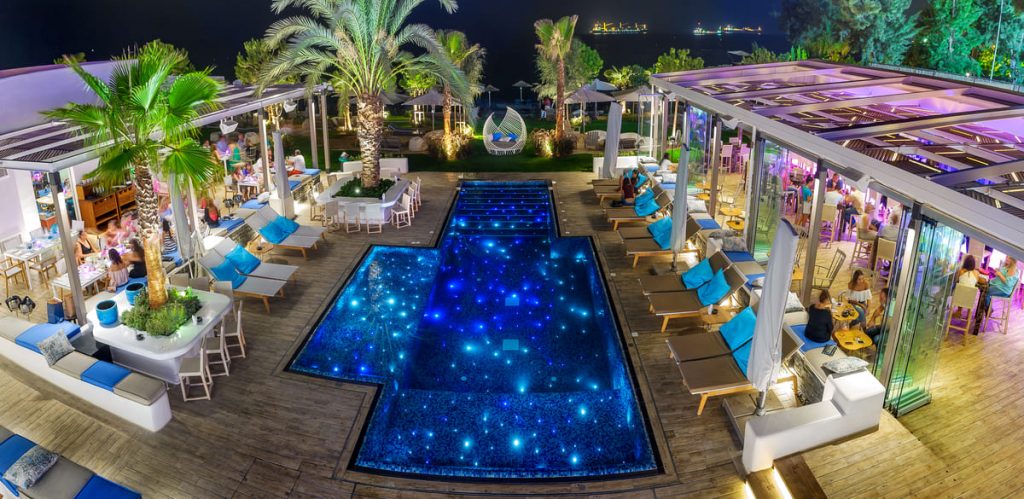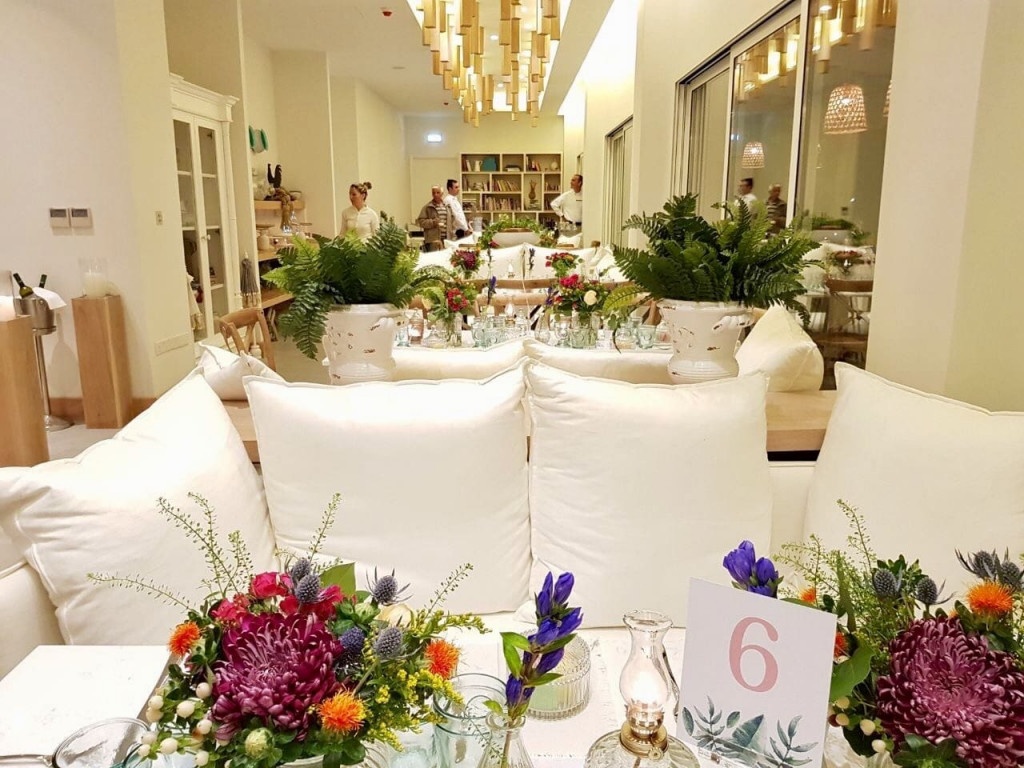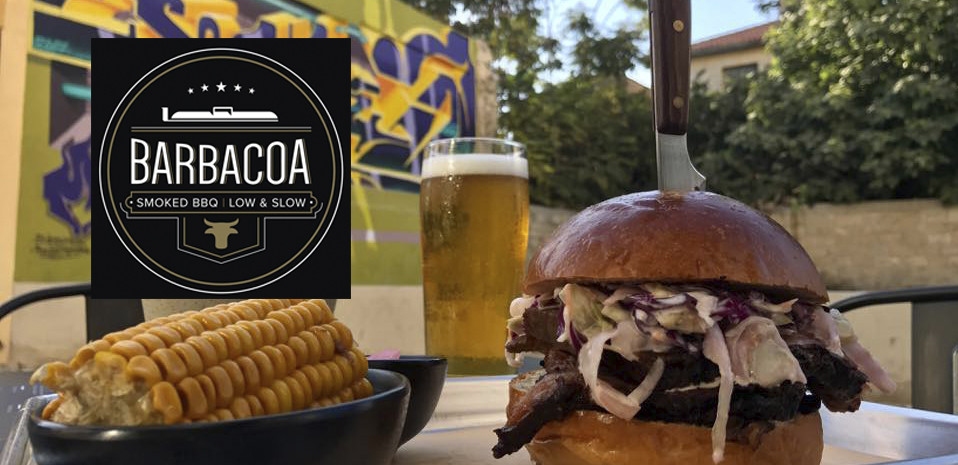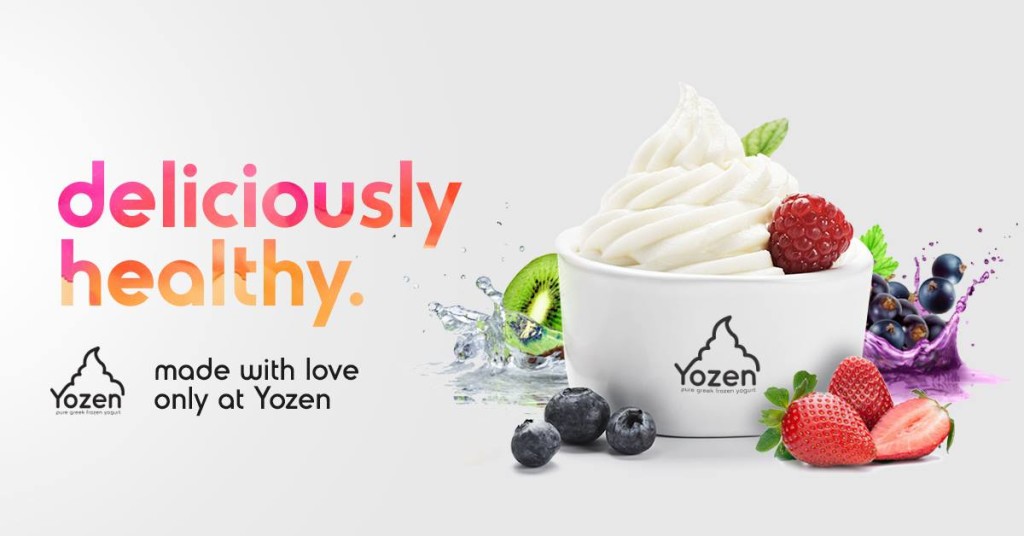Cyprus lends itself to creativity, so when you are here you want to create and invent and hone your skills, but it’s even more interesting to learn something new. There are unexpected discoveries to be made, by children and adults alike, in the ancient craft of pottery. I came to learn about this at the Savvas Pottery studio in Colony, three kilometers away from Paphos.
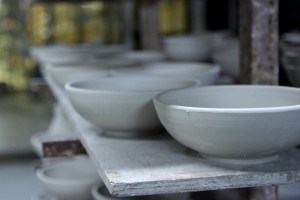 It is a very spiritual place, with a wonderful atmosphere. There are a variety of handmade products and work pieces on the numerous shelves, the smell of fresh clay is everywhere and it feels warm and alive here.
It is a very spiritual place, with a wonderful atmosphere. There are a variety of handmade products and work pieces on the numerous shelves, the smell of fresh clay is everywhere and it feels warm and alive here.
The friendly owner, ceramic artist, Panicos Georgiades, invites you to take part in his relaxing master class in sculpting and painting pottery.
It’s wonderful to make something with your own hands – a coffee set to impress your guests for example, or something unique for your home, a vase decorated with ethnic patterns – and all created by you.
Historically there have been pottery workshops in almost every village in Cyprus. Pottery was vital for Cypriots as it was needed in agriculture and winemaking – to store wine and olive oil. They also made kitchen and household items, all with pink and red clay, and the sale of these items provided an income.
Historically there have been pottery workshops in almost every village in Cyprus. Pottery was vital for Cypriots as it was needed in agriculture and winemaking – to store wine and olive oil. They also made kitchen and household items, all with pink and red clay, and the sale of these items provided an income.
Savvas’ Pottery Workshop has its own history, beginning in 1964 in Kyrenia on the northern part of the island. There the Panicos family opened their first pottery which soon became famous, even outside Cyprus, as their pottery was unlike anything else on the island.
Panicos studied in Germany and inherited the family business, but in 1974 had to flee Kyrenia and relocate to the west of the island.
 It was not easy settling into a new location, but they withstood the test and their ceramics are now even better than before.
It was not easy settling into a new location, but they withstood the test and their ceramics are now even better than before.
Today Savvas Pottery makes many exclusive items, combining tradition and art nouveau, and mythological characters can be seen in their ceramics. In addition to vases, plates and tea sets, you can see hovering butterflies, strange fish, lampshades, lamps and wall panels. The studio is always creating new styles and colour schemes for their clay items, and the white clay souvenirs and dishes have always been popular with tourists.
After the tour, Panicos demonstrates his pottery techniques and shares some secrets.
Now is the long-awaited moment when I get to sit at the potter’s wheel! First I select the amount of clay I will need. The wheel starts turning and the form comes to life; with just a few simple movements and a light touch it is transformed into a vase.
A few more touches and a pot magically appears.
Creating beautiful pottery on a wheel is certainly no easy task. Even under the strict guidance of ‘the master’ I had difficulty. The main rule seems to be that you must work slowly and gently to achieve good results, something we don’t often get to experience in our modern hustle bustle life.
“The potter’s wheel – is an instrument, like a violin, cello or saxophone, which you play as a work of art, – says Panicos. – You also play with shapes. Learning how to work on it takes time and needs patience”.
There are many hours of drying for the finished products. They then need to be baked and painted with the coloured inks. It may also be necessary to use a glaze…..it feels great to create something – from a shapeless lump of clay into a small, unique masterpiece!
You can create anything imaginable at the workshops. My colleagues, who’ve come with me this winter’s evening, are making Christmas bells, welcome signs for the door and candlesticks as presents for their friends.
These workshops are open to everyone. There is no restriction on age or nationality. On the contrary, it’s very interesting as the work brings together Russian, Greek, British, men, women, adults and children into the wonderful world of living clay. The four elements of earth, water, fire and air are merged in the process of moulding and firing and there is such tremendous pleasure to be had from the experience.




